How long do budgerigars live?
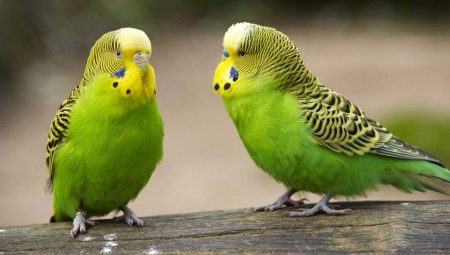
Perhaps one of the most common pets are budgerigars. Keeping a puppy or kitten scares you with difficult care, difficult hygiene training, and buying a small bird does not seem such a burdensome step. But even these unpretentious birds require attention and care, thanks to which their life in captivity will be long enough.

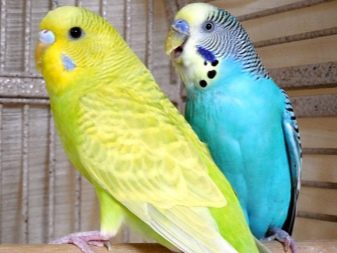
How many years has been living in nature
Vibrant, rowdy flocks of budgerigars are a common sight in Australia's forests. They lead a nomadic lifestyle, migrating throughout the continent. Their diet: grass seeds, small nuts and fruits.
During the dry season, hundreds of parrots can raid agricultural crops and fly into cities.
In the wild, the natural color of the species is green-yellow plumage, which allows it to hide from enemies in lush grass and leaves. After all, the generally accepted name of Australia is the "green continent".
Large lizards, snakes, predatory animals and birds are dangerous for parrots. Drought causes major damage when birds have no access to water and have nothing to feed on. Dirty reservoirs with infections also lead to massive deaths of birds.
Fortunately, good adaptability, fertility, and the fact that the nesting period does not have a clear time frame, allow the population to quickly recover.
Unlike large parrots such as macaws and cockatoos, small species do not have longevity. The average life expectancy of a parrot in the wild is about 5 years, 8-10-year-old individuals are considered centenarians.
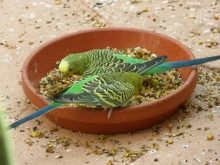
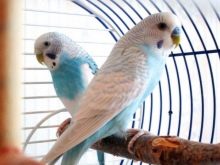
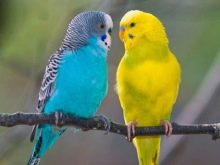
Life expectancy at home
Budgerigars were introduced to Europe in 1840. They quickly invaded the zoos and homes of the wealthy nobility. Their popularity grew, and soon almost anyone could afford to have a bright exotic toy.
Today it is the most widespread house bird. And the work of breeders made it possible to breed many colors: about 200 colors and their combinations.
The absence of predators, difficult climatic conditions and affordable food allow pets to live longer.
Small parrots and in captivity live less than the record cockatoo, but good care will provide, on average, about 10 years of communication with this beautiful bird... With professional breeders and under favorable conditions, the birds can easily achieve 15-year milestone, there are cases when they survive up to 20-22 years.
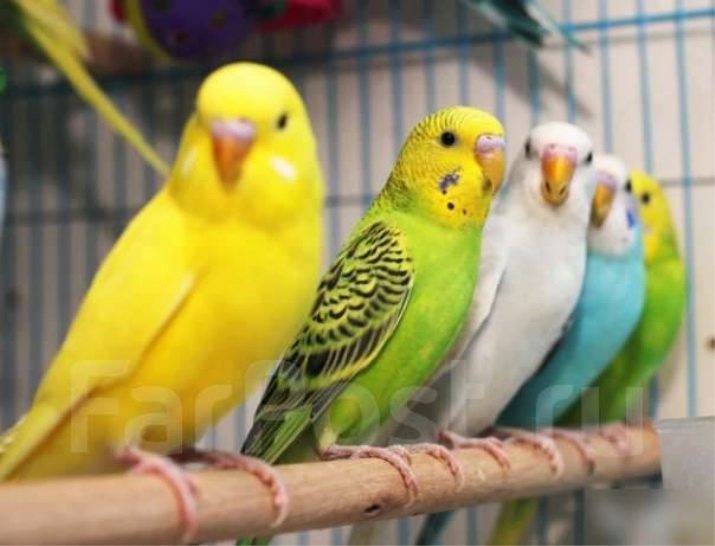
Couples
In nature, you cannot find a single budgerigar, but you can choose one male or a female for an apartment, or have a couple of birds. Two parrots in the house are the best option that improves their quality of life.
In a heterosexual pair, it is preferable if the male is 2-3 years older than the female. An older female may begin to dominate and offend a younger mate.
It is very important to take into account the coincidence of temperaments.
At the poultry market or in the breeder's aviary, pay attention to the behavior of the birds: you should not combine an overly playful bird with a quiet and sedentary one.
If you do not acquire a pair together, but add a new partner to your pet, then you need to carefully consider the adaptation process: first, you can put the newcomer in a separate cage and put it next to it, carefully observing how the birds behave. If they have a mutual interest without aggression, then the couple can be united.
Each bird should be given equal attention, duplicate toys, make sure that the birds do not quarrel at the feeder and drinker.
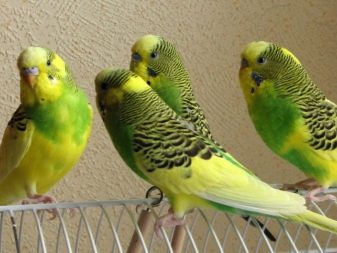
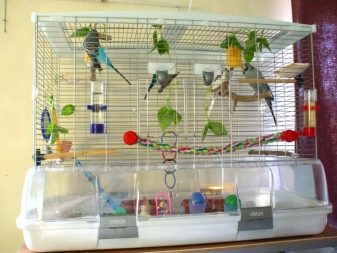
No partner
It is believed that lonely parrots live at home less than couples: a caring owner can become a bird's best friend, but cannot replace a relative.
Budgerigars are social birds and their communication plays an important role in prolonging the years.
It is, of course, easier to keep one bird: a more compact cage, more economical feed consumption, less noise and debris. But if the owner is absent from work for almost the entire daylight hours, then the loneliness of the bird can cause illness.
The lifespan of a bird in a cage without a partner directly depends on the owner's involvement in the process of existence. A lonely bird can experience constant stress - this is expressed in alertness, aggressive behavior, or, conversely, in apathy.
If all the care of the owner is reduced only to caring for the hygiene of the cage and feeding, then the parrot will not be able to fully exist.
It is necessary to show maximum patience and devote time and attention to the pet: talk with him for a long time, play, stroke, teach him to hand.
And how much mutual pleasure learning to imitate speech will bring! But the likelihood of learning to speak is higher in parrots without a pair.
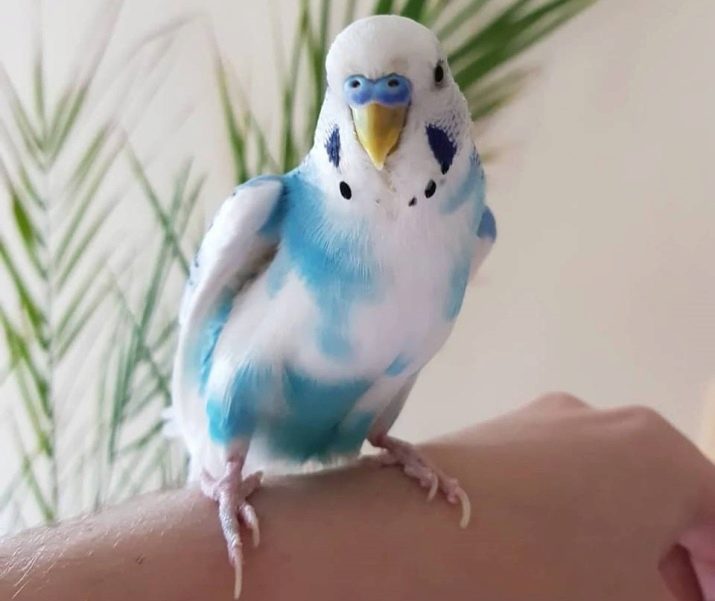
What affects the lifespan
As in nature, at home the parrot first of all needs food and water. Therefore, if the owner is forced to leave, it is necessary that someone can look after the pet. The bird will be able to live 3-4 days without food, and if it survives, the nutritional failure will affect its health.
Forced thirst is much worse: the parrot has a high body temperature, a fast metabolism, so dehydration will inevitably lead to death. Even for 1 day, you should not leave the bird without access to clean water.
The number of years given to a pet when kept in a cage is influenced by such factors.
- Genetics - congenital diseases and weak immunity can be caused by improper selection.
- Nutrition - if you randomly feed your pet with the leftovers from our table, there is a danger that he will "earn" indigestion or obesity. Nutrition should be balanced, it is better to use special food from a pet store, supplementing it with fruits, herbs, sprouted grains.
- Conditions of detention - for a long life of a parrot, it is necessary to purchase a spacious cage and place it correctly in the apartment, taking into account the temperature regime and illumination.
- Physical exercise - a bird that is naturally active requires daily flight exercise.
- No stress - it is advisable to protect the bird from nervous shocks: loud noises, constant travel, a large number of strangers, aggressive animals.
- Compliance with safety rules - the responsible owner is obliged to ensure that the curious and mobile bird does not get injured or die due to negligence.

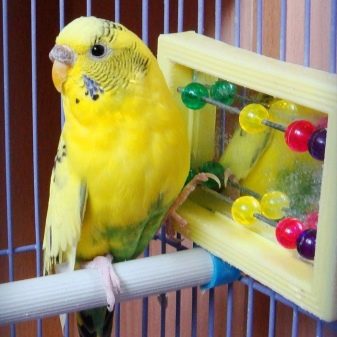
How to care for
Budgerigars are easy to care for. The minimum cage size for one is 40x25x30 cm, for a couple - 60x30x40 cm. The pull-out bottom must be kept clean. Equip the house with a feeder, drinker, perches at different levels, toys. It is recommended to arrange water procedures for your pet by placing a wide bowl of water. Sand baths are also useful: "bathing" in clean sand has a beneficial effect on plumage.
The place for the cage should be protected from drafts, and a favorable air temperature is considered to be about + 22 ° C.
Do not place the cage next to radiators, heaters, or gas stoves.
Drinking water should always be clean. When buying feed, check the expiration date and the integrity of the packaging so that the grain is not spoiled. Useful additives: chalk, boiled yolk, pieces of fruit, herbs.
Carry out daily "walks" of the parrot under supervision: the windows should be closed, and the glass and large mirrors should be curtains so that the bird does not hit. Do not allow birds to gnaw on indoor plants: they can be poisonous. Protect other pets from attacks: cats and dogs.
The longevity of a captive parrot depends on the content - create maximum conditions and the bird will live happily ever after.


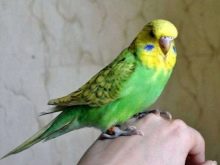
For information on how to care for budgies, see the video below.








